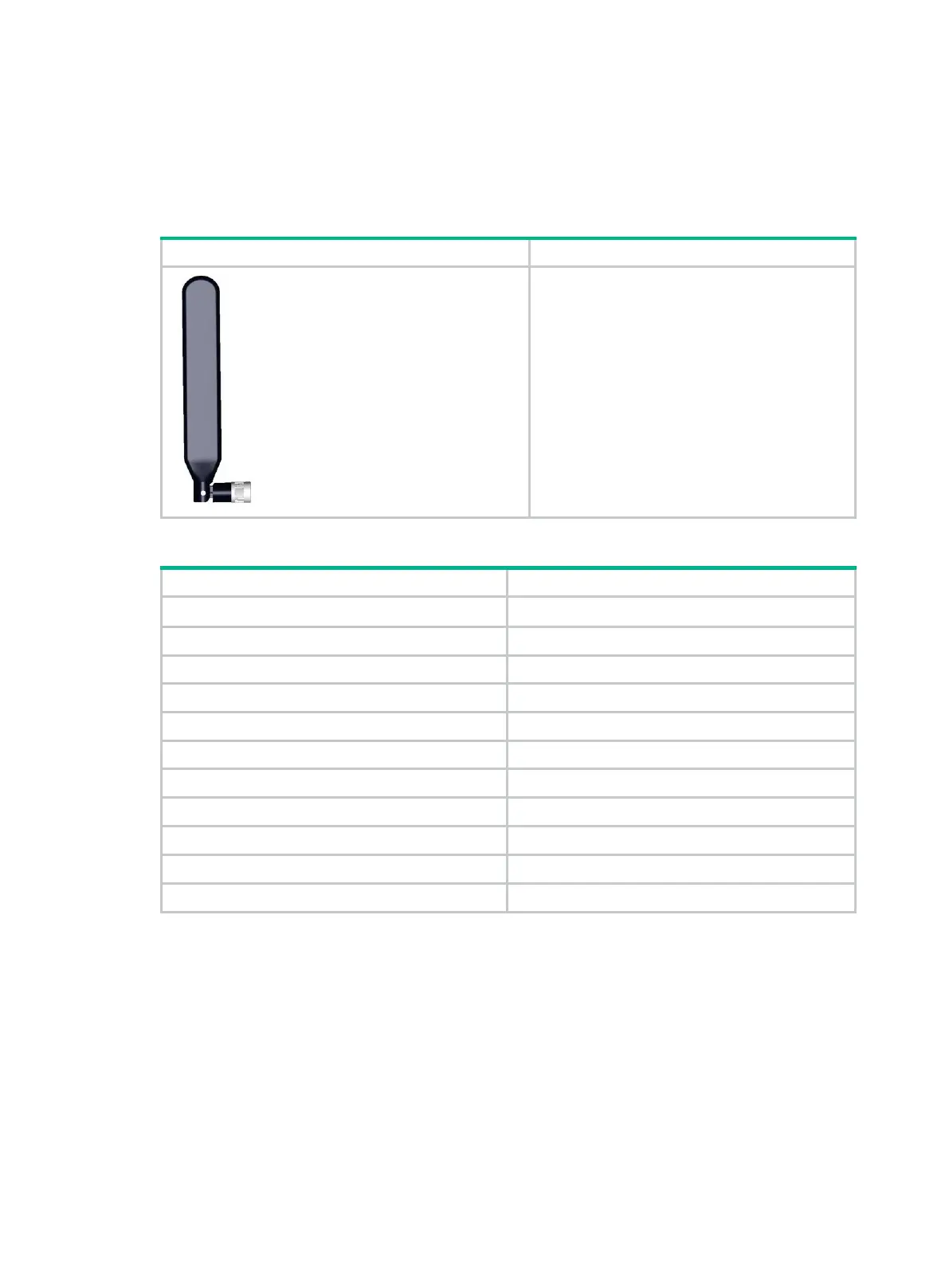175
4G interface
Appearance and applicable models of the SIC-4G-LTE-V/SIC-4G-LTE-A/SIC-4G-LTE-G
interface module antenna
Table 254 Appearance and applicable models of the 4G interface module antenna
SIC-4G-LTE-V
SIC-4G-LTE-A
SIC-4G-LTE-G
Table 255 Specifications
Frequency scope 698 to 960 MHz/1.71 to 2.7 GHz
Voltage standing wave ratio 2.5
Input impedance 50 ohms
Gain 2 dBi
Polarization type Vertical
Maximum input power 5 W
Interface TNC
Height 21.4 cm (8.43 in)
Weight 50.5 g (1.78 oz)
Color Black
Operation temperature –40°C to +85°C (–40°F to +185°F)
Installing a 4G interface module antenna
1. Change the angle of the antenna orientation from vertical to horizontal.
2. Fasten the antenna onto the antenna port that has a MAIN mark. Avoid over-tightening.
3. Change the antenna orientation to vertical to achieve better signal coverage.
Installing a 4G interface debugging antenna
A 4G interface module has a Mini USB port to connect to the peer device through the USB console
cable for third-party software to debug the 4G interface module. When the interface module is
operating correctly, you do not need to connect the USB console cable.
To debug a 4G interface module:
1. Connect the port at one end of the USB console cable to the peer device (PC).

